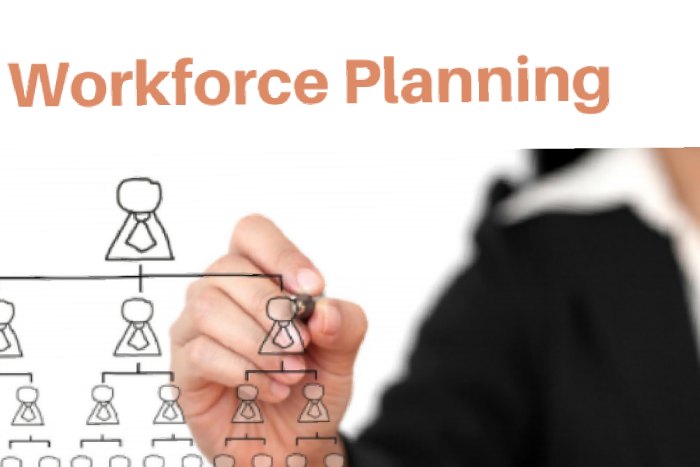Workforce plans are customized to the complexities of the organization because each company has unique and specific needs. Asset managers and corporate clients looking to benchmark against competitors can use the best standard guidelines to develop their plans. From workforce intelligence to staffing gap evaluation and solution deployment to performance assessment, here are the main components of a workforce plan:
Table of Contents
Workforce Analysis
A workforce analysis examines the company’s labor supply, its current needs, and future workforce needs. The first step of developing a workforce plan involves a comprehensive analysis of the current state. Analyzing the existing workforce and needs can reveal how equipped the team is to fulfill the company’s short-term and long-term objectives. Workforce analysis reviews three main areas as follows:
1.) Current Labor Supply/Demand: Involves evaluating the current supply of labor at the company’s disposal and the level of labor required to fulfill present goals.
2.) Future Workforce Needs: Examines external and internal variables impacting workforce needs and the ability to meet future staffing requirements.
3.) Skill & Interest Inventory: Reviews current and needed job/competency requirements and employee skill sets.
Workforce analysis is useful in strategic workforce planning as it uncovers the details of the company’s current situation. You can quickly determine strengths, weaknesses, opportunities, and threats, all of which can help you identify the best solutions and adjustments. The goal is to have a deeper understanding of the current situation, including what’s available and what’s needed. You can then predict future needs and make the right moves to meet your goals.
Staffing Gap Analysis
Modern companies can use a staffing gap analysis to reveal the current workforce supply and demand gaps. The analysis also examines gaps in the present ability to predict and adapt to future workforce needs and changes. Staffing gap analysis uses data from the workforce analysis to uncover gaps between overall staffing needs and available labor supply. Three main parts highlight this step of workforce planning:
1.) Workforce Surplus/Shortage: Reviews the current labor supply and demand and compares them against future workforce needs. The analysis will reveal the presence of labor surplus or shortage.
2.) Potential Employee Retirement: Involves determining the demographics eligible for retirement, when they’ll retire, and who will replace them. The goal is to place contingency plans for replacement or alternative work arrangements to avoid retirement-induced vacancies.
3.) Talent Action Plan: Outlines the designated responsibilities for each acquired talent, including steps needed to fill existing positions. The plan can address skill gaps and maintain a talent pool capable of achieving projected growth rates.
Companies can suffer staffing gaps in different scenarios. Gap and risk analysis calculates and analyzes the ridges between demand and supply concerning staffing capacity and capability. The study considers various scenarios, including the risk of not addressing gaps and impacts on company objectives and business operations. You can then secure enough talent and personnel for your business’s current, emerging, and future needs.
Strategy Implementation – Workforce Plan
Workforce and skill gap analysis can reveal what needs to change. Once you determine the gaps in your processes, the next step is to develop a strategy/solution to address each one. Strategy deployment is where your efforts come together for effective execution. Deploying a workforce plan is an ongoing process focused on continuous improvement, adjustments, and adaptation to changes. Deployment involves the following:
1.) Succession Planning: Involves establishing a progression for key business positions.
2.) Leadership Training: Identifies high-potential employees to coach, mentor, and develop.
3.) Talent Acquisition: Involves calculating needed headcount, positions, and locations to ensure seamless recruiting.
4.) Talent Retention: Entails forecasting turnover, identifying high-risk employees, and finding ways to keep them.
Solution deployment has many facets, including employee redeployment, contingent workforce, backfills, internal placements, and outsourcing. Some organizations offer career counseling to help employees move up in rank. Strategy implementation is why you create a workforce plan. Modern companies can leverage workforce intelligence to achieve smooth deployment and cover all gaps and risks.
Performance Assessment
Every workforce plan needs a way to evaluate its performance. Developing the plan takes time and resources and is meant to resolve specific issues. Performance assessment is an ongoing process involving select organization members monitoring predetermined workforce success metrics. The goal is to assess how well the workforce plan benefits the organization as a whole and to determine flaws in the processes and strategies.
Monitoring a workforce plan can help you evaluate your business’s success and make necessary adjustments to optimize business strategies. The workforce plan should specify what metrics will be used to assess performance. Performance evaluation also features instructions for modifying scenarios if underlying assumptions change significantly. The evaluation feedback is used to refine the workforce plan and facilitate goal accomplishment.
Leveraging Workforce Intelligence – Workforce Plan
A workforce plan has many standard components, including the executive summary, introduction, purpose, scope, and governance. Each company can create a unique guideline and framework, depending on its needs. Businesses can also leverage workforce intelligence hubs to see what successful companies are doing for benchmarking.



